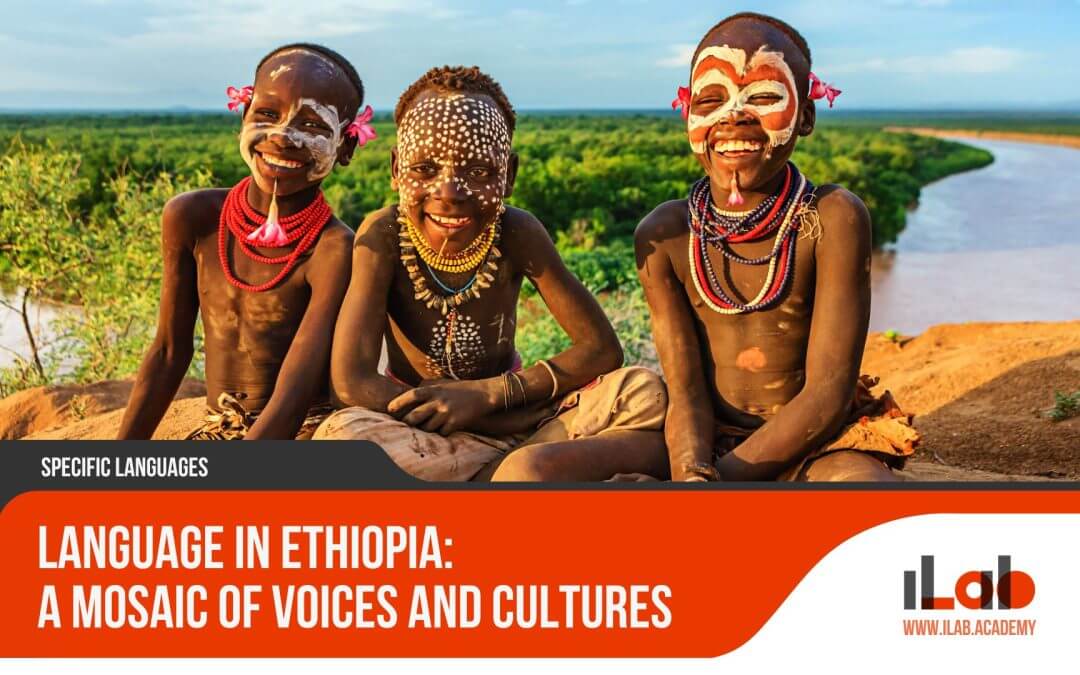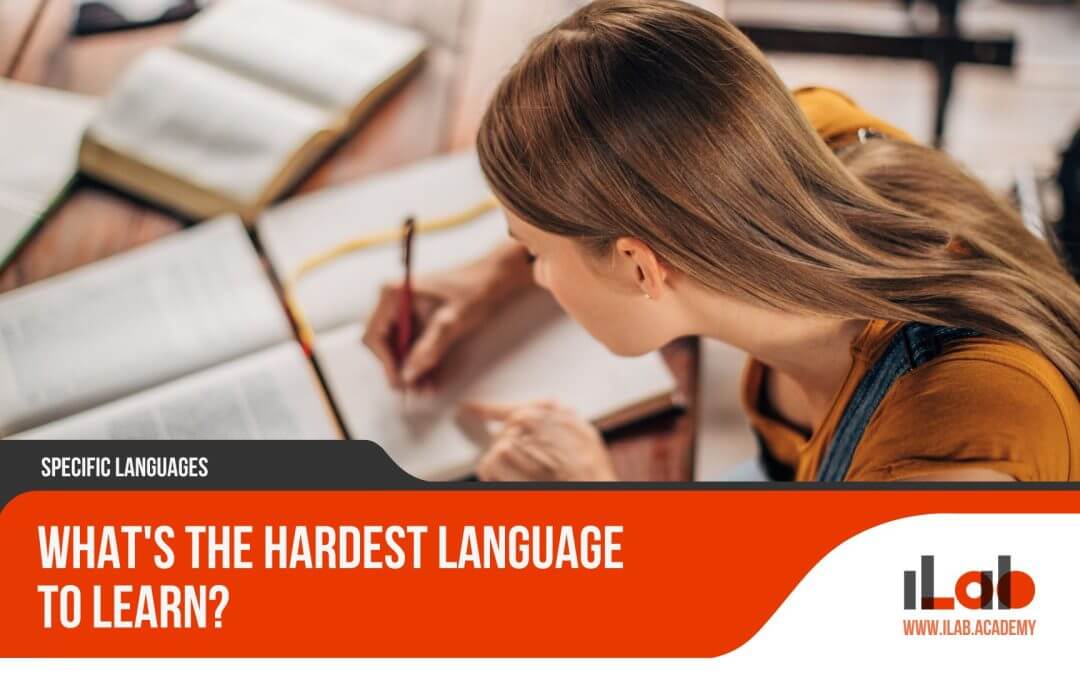Table of contents
Nepal, a country often synonymous with its majestic Himalayas and rich cultural heritage, is home to a complex and fascinating linguistic ecosystem. The nuances of its language landscape are not widely known, but they are as intricate and varied as the nation’s topography. While Nepali holds the official status, it is the symphony of numerous other languages and dialects that truly encapsulates Nepal’s social fabric. The exploration of this linguistic diversity is not merely an academic exercise but a journey into the heart of Nepal’s identity, where each language acts as a vessel for the history, traditions, and values of its speakers. To fully appreciate the cultural and ethnic tapestry of Nepal, one must look beyond the surface of its linguistic profile, recognizing the role each language plays in shaping the communal and individual lives of its citizens. The dialogue on Nepal’s languages opens up broader questions about how these languages coexist, adapt, and thrive in a rapidly globalizing world, and what implications this has for the future of the nation’s linguistic heritage.
Key Takeaways
- Nepali is the official language of Nepal and plays a central role in national affairs, including government, education, media, and as a unifying force among diverse ethnic groups.
- Nepal has a diverse linguistic landscape with various regional languages such as Maithili, Bhojpuri, Tharu, Tamang, Newar, and many others, each with its own geographic stronghold and cultural significance.
- Nepal is home to numerous minority languages and dialects, highlighting the country’s linguistic diversity and the need for their preservation in a globalizing world.
- The article will discuss linguistic policies in Nepal, including the government’s stance on multilingualism and efforts to promote language diversity through multilingual education.
Official Language of Nepal: Unraveling the Dominance of Nepali
Nepali, designated as the official language of Nepal, stands at the heart of national identity, serving as a pivotal element in government, education, and media, while bridging the communication gap among the nation’s diverse ethnic communities. Originating from the hill region of Gorkha, Nepali has undergone significant evolution to become the predominant mode of communication in the country. As a derivative of Sanskrit, it boasts a rich literary tradition and serves as a cornerstone for cultural expression.
Nepali’s official status ensures its widespread use in legislative affairs, judiciary proceedings, and administrative functions. The language’s reach extends to the educational system, where it is the primary medium of instruction, reinforcing its significance from early childhood education to higher academic levels. Furthermore, Nepali’s presence in media – from print to digital platforms – solidifies its role in shaping public opinion and providing information to the populace.
Despite Nepal’s linguistic diversity, with over 120 languages spoken across various ethnic groups, Nepali functions as a unifier. It facilitates interethnic communication and fosters a sense of shared identity among Nepal’s citizens. This linguistic unity is crucial in a country where many languages exist with their own geographic strongholds and cultural significance.
However, the dominance of Nepali does not overshadow the importance of regional languages, which continue to thrive and contribute to the country’s rich cultural tapestry. The government acknowledges this diversity by providing some space for regional languages in local governance and education, reflecting a commitment to cultural inclusivity and multilingualism. In summary, Nepali’s role as the official language is instrumental in the day-to-day functioning of the nation while simultaneously serving as a binding force that encapsulates Nepal’s collective ethos.
The Linguistic Mosaic: Regional Languages Across Nepal
Venturing beyond the ubiquity of Nepali, Nepal’s linguistic landscape reveals a vibrant tapestry of regional languages, each deeply rooted in the cultural and social fabric of its respective communities. These languages are not mere modes of communication; they are the bearers of folklore, the purveyors of tradition, and a testament to the resilience of the diverse ethnic groups that make up this Himalayan nation.
The regional languages of Nepal are as varied as the terrain, ranging from the plains of the Terai to the heights of the Himalayas. Maithili and Bhojpuri, for instance, are predominant in the lowland areas along the southern border, while Tamang and Newar languages have a historic presence in the central hilly regions. Each language zone corresponds to the unique lifestyles and traditions of the local population, further demonstrating the country’s cultural plurality.
Below is a table that outlines some of the regional languages of Nepal along with their primary locations and associated ethnic groups:
| Language | Location | Ethnic Group |
|---|---|---|
| Maithili | Terai Region | Maithil People |
| Bhojpuri | Terai Region | Bhojpuri People |
| Tamang | Central Hills | Tamang People |
| Newar | Kathmandu Valley | Newar People |
This linguistic mosaic is not static; it is dynamic and continuously evolving. The languages spoken across Nepal’s regions are influenced by socioeconomic changes, migration, intercultural marriages, and the pressures of globalization. Understanding this complex web of languages is crucial for anyone seeking to grasp the essence of Nepal’s identity, which is as multifaceted as the languages themselves.
Minority Languages and Dialects: A Reflection of Nepal’s Diversity
Beneath the canopy of Nepal’s major languages lies a rich undergrowth of minority languages and dialects, each offering a unique perspective on the nation’s cultural complexity. Nepal’s linguistic tapestry is as varied as its topography, with over 120 languages and dialects spoken by different communities across the country. These minority languages serve as a testament to the nation’s storied history and the resilience of its people.
Many of these languages belong to the Tibeto-Burman and Indo-Aryan language families, reflecting the historical migrations and trade routes that have shaped the region. Languages such as Rai, Limbu, Magar, and Gurung are spoken by indigenous communities and are an integral part of their ethnic identity and cultural heritage. These languages are often closely tied to oral traditions, folklore, and local customs, making them crucial for understanding the social fabric of Nepal.
Despite their importance, many of these minority languages face challenges due to globalization, urbanization, and the dominance of Nepali and English in official domains. The younger generations are increasingly drawn to these more widely used languages, which offer greater economic opportunities and social mobility. This shift can lead to language endangerment and, eventually, the loss of unique cultural knowledge and identity.
To preserve this linguistic diversity, there has been a growing recognition of the need for language documentation, revitalization initiatives, and inclusion in educational curricula. Efforts are being made to record and promote these languages to ensure they remain a living, breathing part of Nepal’s cultural mosaic. By acknowledging and supporting the minority languages of Nepal, the nation not only honors its past but also enriches its present and secures a more diverse future.
Linguistic Policies and Multilingual Education in Nepal
Recognizing the cultural imperative of minority languages, Nepal has implemented policies aimed at fostering a multilingual education system that reflects its diverse linguistic heritage. These policies are rooted in the understanding that language plays a crucial role in the development of cultural identity and the promotion of social cohesion. The Constitution of Nepal recognizes the importance of linguistic diversity and provides for the right to receive education in one’s mother tongue.
To operationalize this constitutional guarantee, the government has adopted a multilingual education approach, particularly in areas where indigenous languages are prevalent. This strategy involves the development of curricula and educational materials in various local languages, enabling children to begin their education in a language they are most familiar with, before transitioning to the national language, Nepali.
The Ministry of Education, Science, and Technology is responsible for implementing these policies, working collaboratively with local communities, educators, and language experts to ensure that instruction in minority languages is available and effective. The goal is not only to improve educational outcomes but also to preserve and valorize the rich tapestry of languages spoken across the nation.
Moreover, Nepal’s linguistic policies extend beyond the classroom. The government encourages the use of multiple languages in official matters, aiming to ensure that all citizens can access services and participate in civic life without language barriers. This inclusive approach to language policy is a testament to Nepal’s commitment to embracing its linguistic diversity as a cornerstone of national identity and unity.
Language Preservation and Revitalization Efforts
In the face of globalization and cultural assimilation, Nepal has undertaken significant efforts to preserve and revitalize its indigenous languages, recognizing them as vital components of the nation’s cultural heritage. These endeavors are pivotal in maintaining the country’s rich linguistic diversity, which includes dozens of ethnic languages and dialects, many of which are at risk of falling into disuse.
To counter the threat of language extinction, the government of Nepal, along with various local and international organizations, has implemented a range of initiatives. Among these are educational programs that incorporate mother tongue instruction in early childhood development and primary education, particularly in regions where indigenous languages are predominant. This approach not only facilitates a better learning environment for children but also instills a sense of pride and identity linked to their linguistic roots.
Additionally, efforts to document and standardize these languages have been intensified, involving the creation of lexicons and grammar guides to aid in language teaching and preservation. Community radio stations, local festivals, and cultural events also play a crucial role in revitalizing indigenous languages by giving them a platform for regular use and encouraging intergenerational transmission.
Moreover, the inclusion of minority languages in media and technological platforms has seen growth, with a push for the localization of software and digital content in various local languages. This technological integration is crucial for ensuring these languages remain relevant and accessible to younger generations who are increasingly tech-savvy.
These collective measures reflect a growing awareness and commitment to safeguarding Nepal’s linguistic heritage. They represent a concerted response to the challenges of modernity, ensuring that the country’s languages continue to thrive and contribute to the global tapestry of cultural diversity.
The Influence of Sanskrit and Other Classical Languages
While efforts to preserve Nepal’s diverse linguistic tapestry continue, it is crucial to acknowledge the profound influence of Sanskrit and other classical languages on this rich cultural fabric. Sanskrit, an ancient Indo-Aryan language, has had a significant impact on the literary and cultural dimensions of Nepali, as well as other local languages spoken in Nepal. It serves as the liturgical language for Hinduism and Buddhism, which are deeply rooted in the Nepalese society, and has historically been a medium for scholarly and religious texts.
The lexicon, syntax, and grammar of the Nepali language are heavily derived from Sanskrit. Many other languages in Nepal, such as Maithili and Newar, also bear the imprint of Sanskrit influence through their scripts, vocabulary, and literary traditions. The role of Sanskrit extends beyond religious scriptures; it has shaped classical poetry, drama, and prose that are considered literary treasures in Nepal.
Furthermore, other classical languages like Pali and Prakrit have contributed to the linguistic landscape of Nepal, especially in the context of Buddhism and Jainism. These languages have provided a foundation for many philosophical, historical, and cultural texts that are integral to the heritage of Nepal.
The continued relevance of these classical languages is evident in contemporary literature and education. Sanskrit schools and colleges still exist, preserving and fostering traditional learning. Moreover, the influence of Sanskrit is seen in the modern educational curriculum, highlighting its importance in understanding ancient texts and cultural practices.
In essence, Sanskrit and other classical languages are not merely historical footnotes but active, living components that enrich the contemporary linguistic and cultural identity of Nepal.
The Role of English and Other Foreign Languages in Nepal
English and other foreign languages have carved out a significant niche in Nepalese society, serving as essential tools in sectors such as higher education, international business, and tourism. English, in particular, is increasingly seen as a language of opportunity, offering access to global markets, international collaboration, and a wealth of educational resources. Its prevalence is evident in the country’s educational institutions, where English is often the medium of instruction, especially in higher education and private schools.
In the business realm, English serves as the lingua franca, enabling Nepalese companies to engage with international partners and customers. Meanwhile, foreign languages like Chinese, Korean, Japanese, and Spanish are also gaining traction, driven by Nepal’s expanding ties with other nations and the growth of tourism. These languages are becoming more prominent in language institutes and are seen as valuable skills for those seeking employment in the tourism sector, which is a significant contributor to Nepal’s economy.
The table below highlights the key sectors where English and other foreign languages play a pivotal role:
| Sector | Significance of English and Foreign Languages |
|---|---|
| Education | Medium of instruction in schools and universities |
| Business | Essential for international trade and communication |
| Tourism | Communication with tourists and service industry training |
| Diplomacy | Conducting international relations and negotiations |
| Technology | Access to global information and software |
Understanding the role of these languages is crucial for grasping the dynamics of Nepal’s sociolinguistic landscape. As the country continues to develop, the influence of English and other foreign languages is likely to grow, shaping the future of communication and cultural exchange in Nepal.
Language in Cultural Expression and Identity in Nepal
Language serves as the heartbeat of Nepalese culture, pulsating through the veins of art, literature, and daily practices, and anchoring the populace to a shared heritage. In Nepal, language is not merely a tool for communication; it is imbued with cultural significance and is central to the expression of identity. The Nepalese linguistic tapestry is rich and diverse, with over 120 languages spoken across the country, reflecting the mosaic of ethnic groups that call this Himalayan nation home.
Each language and dialect in Nepal carries its own cultural weight, embodying traditions, folklore, values, and the collective memory of its speakers. For instance, the Newar community, indigenous to the Kathmandu Valley, expresses its unique identity through the Newari language, which is evident in their festivals, rituals, and literature. Similarly, the Maithili speakers of the Terai region bring forth a literary heritage that dates back centuries, with their language being a vessel for their prolific poetry and art.
The role of language in cultural expression is also witnessed in the performing arts. Traditional songs, dances, and theatrical performances are often conveyed in local languages, serving as repositories of cultural narratives and historical legacies. Moreover, these languages are the lifeline of oral traditions, where myths, legends, and ancestral stories are passed down through generations, preserving the distinct ethnic identities amidst Nepal’s cultural plurality.
Importantly, language in Nepal is also a symbol of continuity, linking the past with the present and the future. As globalization and modernization bring about changes in societal norms, the enduring presence of local languages in cultural practices ensures the perpetual renewal of Nepalese identity. Thus, the linguistic landscape of Nepal is a testament to the country’s steadfast commitment to celebrating its cultural richness and maintaining the essence of its heritage.
Navigating Sociolinguistic Changes in Modern Nepal
In the dynamic landscape of modern Nepal, urbanization, migration, and technological advancements are profoundly reshaping the sociolinguistic fabric of the nation. The once predominantly rural society is now becoming increasingly urbanized, leading to a melting pot of languages and dialects in city areas. Internal migration brings diverse linguistic groups into close contact, often catalyzing the adoption of Nepali as a lingua franca, while still maintaining a strong sense of linguistic identity.
Technological advancements and the rise of digital communication platforms have introduced the English language into everyday use, particularly among the younger generation and in professional settings. This shift reflects a global trend towards English language proficiency as a valuable skill in the job market and for international relations.
The following table encapsulates the emotional landscape of these sociolinguistic changes, highlighting the complexities and inherent sentiments tied to language evolution in Nepal:
| Aspect of Change | Emotional Impact | Societal Implication |
|---|---|---|
| Urbanization | Nostalgia, Loss | Diminished use of regional dialects |
| Migration | Hope, Anxiety | Increased linguistic diversity |
| Technology | Excitement, Fear | Dominance of English and digital literacy |
| Education | Ambition, Struggle | Pressure to adopt multiple languages |
| Globalization | Curiosity, Alienation | Erosion of linguistic heritage |
Navigating these changes requires a delicate balance between embracing modernity and preserving the rich tapestry of Nepal’s native tongues. The emotional resonance within the table above reflects the multifaceted relationship Nepalese people have with their linguistic heritage as they face the realities of a rapidly evolving world. The challenge lies in ensuring that the languages of Nepal continue to thrive, not merely survive, amidst these sociolinguistic shifts.
Frequently Asked Questions
How Do Language Preferences Vary Among Different Age Groups in Nepal, and What Does This Indicate About Generational Language Shifts?
In Nepal, language preferences among age groups reveal generational shifts. Younger Nepalese increasingly embrace English and global languages, reflecting education trends and international exposure. Conversely, older generations typically adhere to indigenous languages, indicative of cultural retention. This divergence suggests a dynamic linguistic evolution, with potential implications for language preservation and policy-making to maintain Nepal’s rich linguistic heritage amidst globalization’s influence.
In What Ways Do International Non-Governmental Organizations (NGOs) Contribute to Language Education and Preservation in Nepal?
International NGOs contribute to language education and preservation in Nepal by providing resources for linguistic research, supporting community-based language revitalization programs, and facilitating the development of educational materials in local languages. These efforts help sustain the multilingual tapestry of the country and empower linguistic minority groups, ensuring their languages and cultures thrive alongside socio-economic developments.
How Has the Nepalese Diaspora Influenced the Global Spread of Nepali and Other Languages From Nepal?
The Nepalese diaspora has played a significant role in the dissemination of Nepali and other languages from Nepal on a global scale. By establishing communities overseas, Nepalese emigrants have fostered linguistic and cultural exchanges, leading to increased awareness and adoption of these languages. Furthermore, diasporic networks often promote language preservation through media, educational institutions, and cultural events, thereby ensuring their mother tongue’s continued relevance abroad.
What Role Does Technology, Such as Social Media and Mobile Apps, Play in the Evolution and Dissemination of Languages in Nepal?
Technology, particularly social media and mobile apps, plays a pivotal role in the evolution and dissemination of languages in modern societies. In Nepal, these digital platforms facilitate the sharing of linguistic content, enable real-time communication across different language speakers, and provide access to language-learning resources. This enhances language visibility, fosters cultural exchange, and contributes to the preservation and revitalization of local languages and dialects within the broader communicative landscape.
How Do Linguistic Practices in Nepal Intersect With Religious Ceremonies and Practices, and Are There Any Languages or Dialects Specifically Reserved for These Purposes?
In Nepal, linguistic practices are deeply intertwined with religious ceremonies, reflecting a rich cultural tapestry. Certain languages and dialects hold special status and are exclusively used in religious contexts, underscoring their sacred significance. These practices not only preserve linguistic diversity but also maintain the spiritual and traditional essence of the nation’s multifaceted religious heritage. The careful use of language in these settings is pivotal for conveying cultural and religious ethos.
Conclusion
In conclusion, Nepal’s linguistic landscape is as diverse and vibrant as its topography, with Nepali serving as a unifying linguistic backbone amidst a rich tapestry of regional and minority languages. The country’s commitment to linguistic policies and education reflects a recognition of the importance of language preservation for cultural identity. As Nepal continues to navigate the complexities of sociolinguistic evolution, the interplay between language, culture, and identity remains a crucial aspect of its national heritage and social cohesion.














